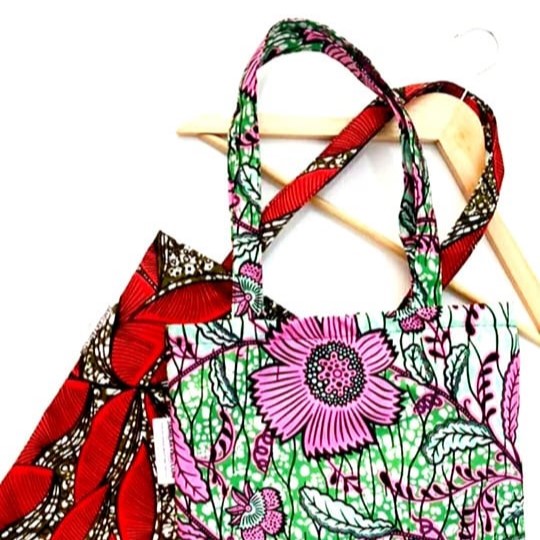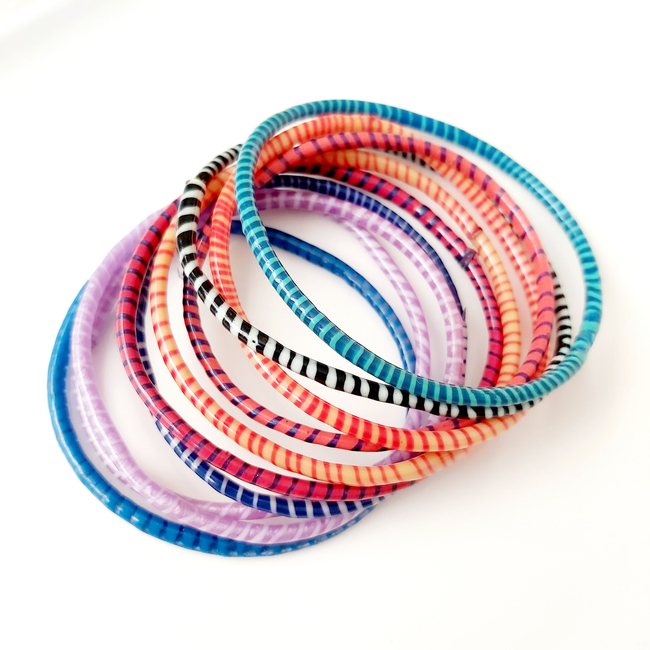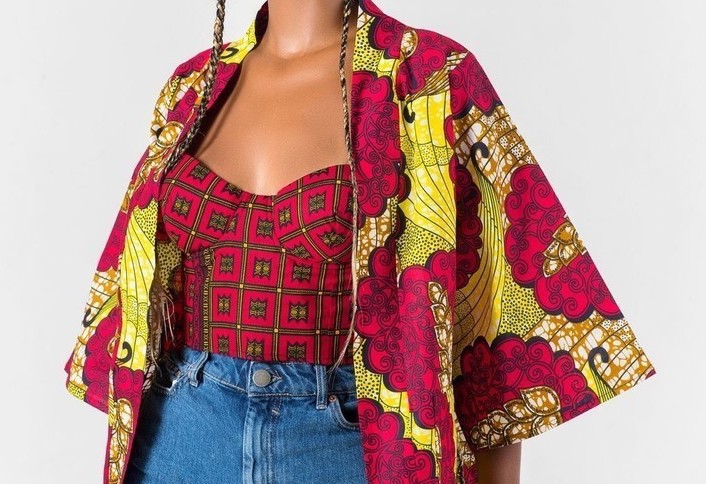Vlisco’s Rise as Top Manufacturer of African Wax Prints
Established in 1846, Vlisco is a fabric manufacturing giant that became synonymous with the rise of African wax prints, including their growing popularity worldwide. Their fabrics blend African originality with Dutch design to transcend cultures and are made with treasured methods and techniques rooted in Indonesian batik. Vlisco’s history is well documented on their website and I recently went there researching to discover more about Vlisco’s origin and history, during which I found some content by Maarten Van Riel, MA that details important moments in the company’s history. Questions I was seeking to answer included, “Where did the term ‘African prints’ come from?” and “How did a Dutch company become the leading manufacturer of fabrics so popular in Africa?”


Well, after some careful reading and analysis, I did arrive at some common sense conclusions that formed the basis for article on Vlisco’s origin and history. Vlisco has evolved over a span of over 200 years through war, industrial revolution, economic change and interntational markets to become a global brand. By reading this article, you can immerse yourself in my research and musings about their unique journey, the cultural significance and resulting impact on Africa’s economy.
Vlisco’s Origins
The company was established in 1846 in Helmond, Netherlands. The Dutch textile industry was going through a period of industrial growth and in 1852, was introduced to the making of wax prints using a local wax-resist dyeing technique known as batik. This technique and the batik fabrics made with it were already widely respected in South-East Asia. Frederik “Frits” Hendrik Fentener van Vlissingen (a family member of the owners based in the Dutch East Indies or modern-day Indonesia) first encountered the process and was awakened to its commercial viability. Eventually Vlisco, started producing their own imitation batik fabrics with the method and introduced it to the domestic market. By the 1860s to 1883, the Dutch then modernized the operation and the batik-making process with an emphasis on industrialization, mechanization and scaling of the previously hard, laborious process of making prints.
From 1883-1918, Vlisco started expanding exports to Africa. Even though the imitation batik fabrics were introduced to local Indonesian markets, it didn’t do so well and by 1885 demand declined. The Indonesian market didn’t see these imitation fabrics as high quality because the Javanaise printing techniques used produced manufacturing defects and so the Dutch import of these fabrics lost market preference. From then on, two traders — F. & A. Swanzy from the United Kingdom and H.J. Haykens11 from the Netherlands played a pivotal role in introducing Dutch wax prints to Africa. Over time, demand continued to grow in Africa post wars and by the 1950s the continent became the major market for Vlisco’s fabrics. This African market has thrived through eras or periods of African independence and continues to even in recent years.
How did a Dutch company become the leading manufacturers of fabrics so popular in Africa?
As mentioned in one of my previous articles on the origin and history of African prints, I stated that African wax prints are actually European or Dutch wax prints. It all boils down to market forces but to effectively analyze the reasons why a Dutch company’s fabrics found so much uptake on the continent, it is important to think through some of what might have been Vlisco’s keys to success.
Industrial Innovation. From the 1860s to 1883, Vlisco invested in improved technology, machinery that enabled then to adopt Perrotine and Javanaise printing techniques and this led to increased efficiency in batik-printing process. This means they could save time, produce more print fabrics, scale their entire operations and ultimately, sell more to meet any rise in demand from the markets.
Creative Designs. After the World War I, Vlisco revamped its design approach by prioritizing distinct designs that resonated culturally with the audience. Its first design department was established in 1918 and hired artists like Duco Crop (1863-1901). Since then, the intricacies of its fabric patterns and colour combinations have increased, showing how a design-centric approach to innovation which has positioned Dutch textiles as the preferred import due to their superior design quality.
Customer Focus. One of the reasons that Vlisco might have been so successful is because of their focus on elevating and empowering their customers — African women. To do this properly, they have to know the customer inside-out. Throughout majority of their marketing campaigns and in their promotional videos, we see women from various part of the continent being celebrated and that has been important to the company’s success. This also started early on because by 1934, the African market for Vlisco’s imports had been growing significantly, prompting Jan Fentener van Vlissingen to take the company’s first official trip to the region in a bid to learn and understand local cultures, tastes and preferences of the people.


Distribution Networks and Partnerships. Since the 1800s, the Dutch carefully built distribution networks spanning the African countries that were along their trade routes during that era. It is also said in one theory that early on, they partnered with soldiers who were recruited to take fabrics back home to their families as gifts, leading to more widespread uptake and adoption in West African countries over the years. Through the 1960s Vlisco also had trading partnerships with prominent sellers, specifically the Nana Benz of Togo — women who supported Vlisco’s business in the region, helped name the designs, thus making them symbols of status, identity and storytelling and cultural expression. Today, the Vlisco network spans offices in various distribution regions, the traders who sell the fabrics and also tailors who sew various creative garments, bringing these fabrics to life. Vlisco currently owns Woodin, Uniwax and Ghana Textiles Printing Company (GTP). Today, Vlisco is a global brand, having various luxury retail operations in Africa and a thriving e-commerce or online store.
If the wax prints are Dutch, where did the term “African prints” come from?
As I considered the Vlisco origin and history, I realized that how “African prints” got its name is not really clear, which is a subject of controversy in several African communities. Many people think the term originated years ago out of the need for European fabric manufacturers to trick people into purchasing wax print fabrics based on a belief that they were genuinely African. In reality, it might have just been a savvy marketing gimmick that worked. In order to make informed decisions however, it is very important for people to know their history and the origins of the fabrics. Most people who interact with African prints on a regular basis can identify the imported prints. To date, in many markets, the European or Dutch wax prints are highly regarded more than the local, indigenous textiles. This only goes to show a culture at play where people prefer foreign-made products due to perceived quality. And yes, foreign fabrics are very well-made. In my opinion, the history of African fabrics is a reality that should serve as inspiration to spur local textile industry.
Repercussions of Dutch wax prints for Africa’s Local Textile Industries
Before the Dutch introduced wax prints to the continent, Africa already has its own thriving textile industries. This included the creation of fabrics from tree bark, animal hide, cotton, jute and silk, raffia palm and more while using materials like mud to create patterns. For example, barkcloth was widely made in Buganda, Uganda but fast forward to today and it is becoming a disappearing art form like most other traditional methods and techniques of fabric-making on the continent. Perhaps the argument could be made that domestic demand for wax prints is gradually replacing other heritage fabrics which include Ghanian kente, Nigerian adire and aso-oke and Mali’s bogolanfini. Nonetheless, I personally love all of the fabrics in all their forms – both traditional and wax prints. In 2020, an artist named Priya Shah made a good attempt to visually represent all the contemporary fabrics in Africa using a map, which is displayed below. It would be a good idea to study the map in efforts to expand one’s knowledge and gain a wholesome understanding of all African fabrics and textiles.

Sources:
- “Fabric Map of Africa.” Mia Kora, 2016, www.miakora.com/product-page/fabric-map-of-africa
- “Our Story.” Vlisco, 2024, vlisco.com/pages/about-vlisco Accessed 23 Dec. 2024.
- “Vlisco History Article.” Vlisco, 2024, https://cdn.shopify.com/s/files/1/0796/3246/6249/files/VLISCO_History_Article.pdf?v=1734361992 Accessed 23 Dec. 2024.
- Vlisco. “Vlisco 175 Years.” YouTube, 25 Nov. 2021, www.youtube.com/watch?v=gpSNpa_0gQI Accessed 23 Dec. 2024.





